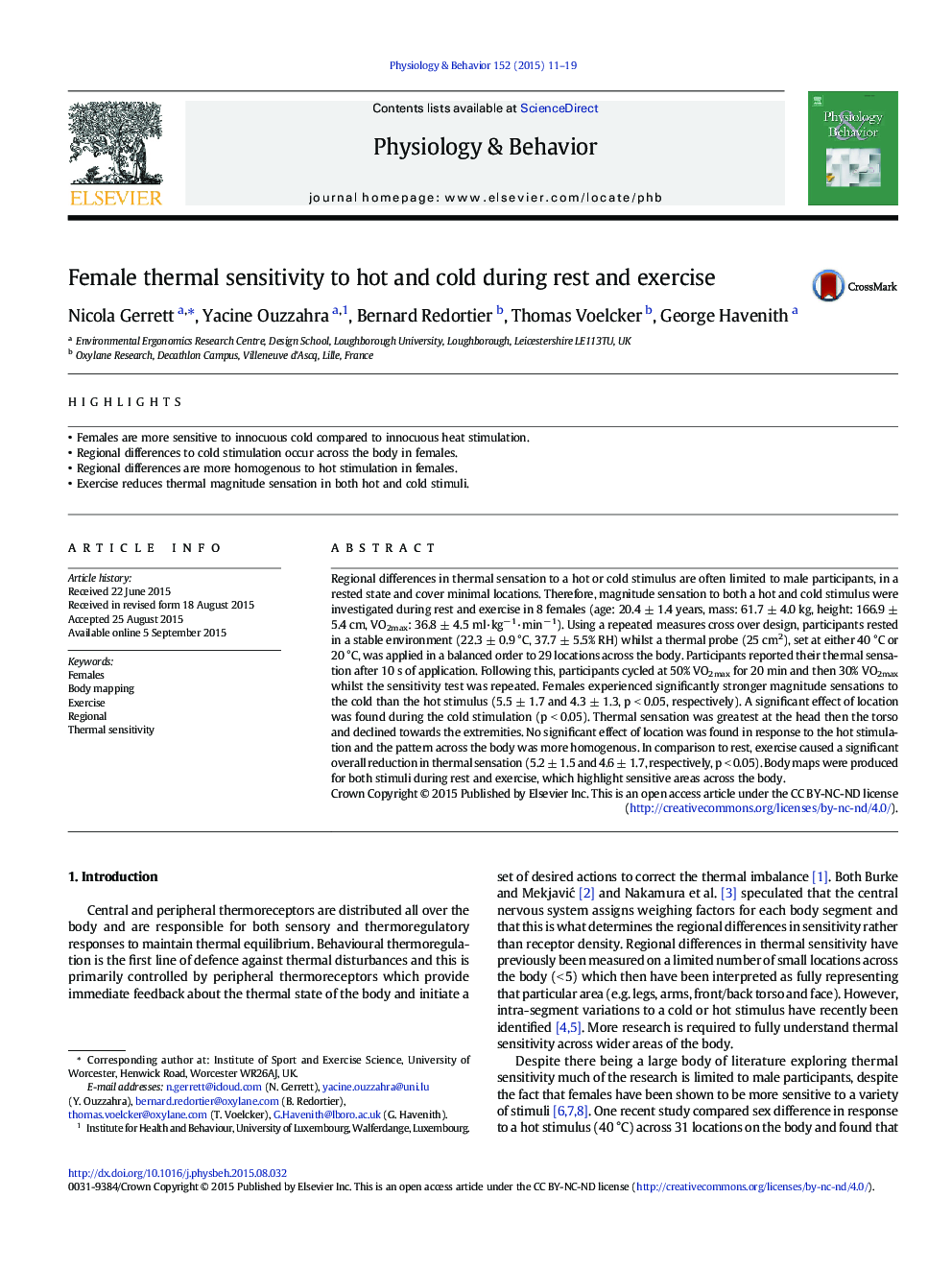| کد مقاله | کد نشریه | سال انتشار | مقاله انگلیسی | نسخه تمام متن |
|---|---|---|---|---|
| 5923024 | 1166292 | 2015 | 9 صفحه PDF | دانلود رایگان |
- Females are more sensitive to innocuous cold compared to innocuous heat stimulation.
- Regional differences to cold stimulation occur across the body in females.
- Regional differences are more homogenous to hot stimulation in females.
- Exercise reduces thermal magnitude sensation in both hot and cold stimuli.
Regional differences in thermal sensation to a hot or cold stimulus are often limited to male participants, in a rested state and cover minimal locations. Therefore, magnitude sensation to both a hot and cold stimulus were investigated during rest and exercise in 8 females (age: 20.4 ± 1.4 years, mass: 61.7 ± 4.0 kg, height: 166.9 ± 5.4 cm, VO2max: 36.8 ± 4.5 ml·kgâ 1·minâ 1). Using a repeated measures cross over design, participants rested in a stable environment (22.3 ± 0.9 °C, 37.7 ± 5.5% RH) whilst a thermal probe (25 cm2), set at either 40 °C or 20 °C, was applied in a balanced order to 29 locations across the body. Participants reported their thermal sensation after 10 s of application. Following this, participants cycled at 50% VO2max for 20 min and then 30% VO2max whilst the sensitivity test was repeated. Females experienced significantly stronger magnitude sensations to the cold than the hot stimulus (5.5 ± 1.7 and 4.3 ± 1.3, p < 0.05, respectively). A significant effect of location was found during the cold stimulation (p < 0.05). Thermal sensation was greatest at the head then the torso and declined towards the extremities. No significant effect of location was found in response to the hot stimulation and the pattern across the body was more homogenous. In comparison to rest, exercise caused a significant overall reduction in thermal sensation (5.2 ± 1.5 and 4.6 ± 1.7, respectively, p < 0.05). Body maps were produced for both stimuli during rest and exercise, which highlight sensitive areas across the body.
Journal: Physiology & Behavior - Volume 152, Part A, 1 December 2015, Pages 11-19
